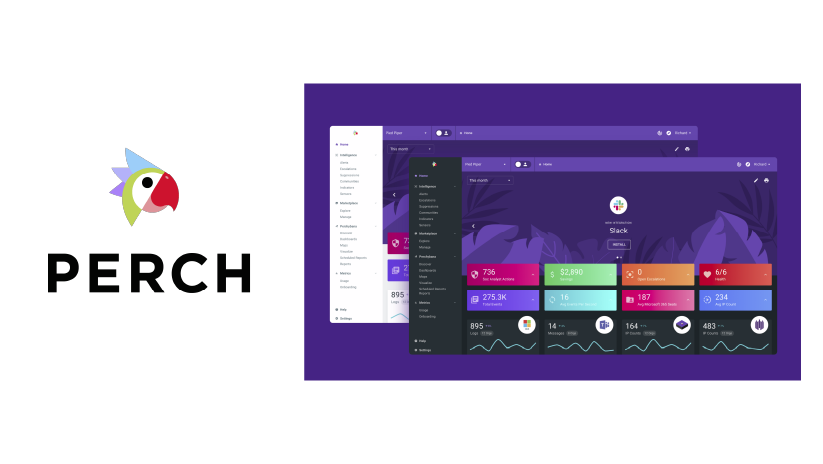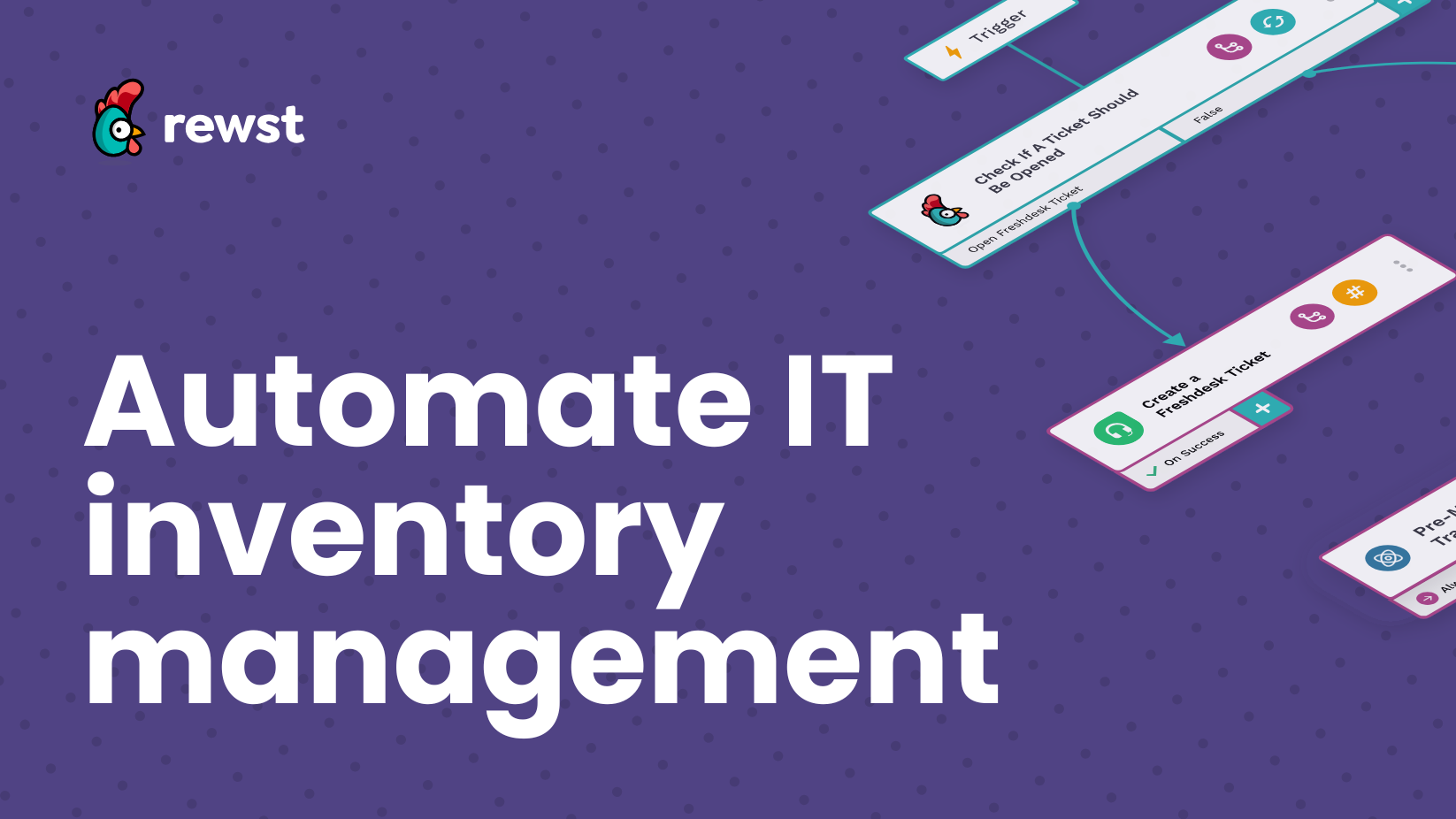How Rewst Empowers Advanced IT Developers with Control and Flexibility
Learn how Rewst empowers advanced developers with flexibility, control, and automation tools to streamline workflows and enhance custom coding efforts.

As a seasoned IT developer, you might be skeptical about embracing low-code automation platforms like Rewst. After all, you’ve spent years mastering the art of code. But what if we told you that Rewst was designed with advanced coders like you in mind?
In this blog post, our CTO Nick Hagianis, delves into the origin story of Rewst. From there, he discusses how Rewst serves as a powerful tool, eliminating potential concerns about losing control over code and finishing what you start.
The Birth of Rewst: Solving Real-World Problems
Rewst emerged from a real-world problem we encountered at our previous MSP startup, Perch Security. Perch was a robust security tool for network monitoring and threat detection. It worked like a charm, identifying potential threats in our customers’ networks and alerting us to action. However, one recurring issue plagued us – responding to threats detected during off-hours. Hackers never sleep, and we couldn’t afford too either.

Our initial goal was to build a Security Orchestration Automation and Response (SOAR) system that would automatically combat threats when our customers couldn’t respond quickly. But as we researched further, we realized this technology could serve broader purposes. SOAR, at its core, was about automating processes with a focus on security. What if we could create a platform that allowed users not only to automate security incidents but also streamline everyday tasks?
A solution for scaling your projects
With this expanded vision in mind, Rewst was born. Our primary goal was to reduce the cost, time, and maintenance overhead of automating various business processes for Managed Service Providers (MSPs). Moreover, we aimed to enhance data quality and reduce the chances of human error in repetitive tasks. Now, as an advanced developer, you might be wondering, “Why should I use Rewst when I can build custom software tailored to my needs?” Fair question. Rewst doesn’t intend to replace your software development efforts for large-scale applications. However, if you’re not launching a massive SaaS business and merely want to create specific features for your internal users or select customers, Rewst can be a valuable ally. Rewst was built with software developers in mind from the beginning. Our approach is to give power users the tools and primitive components they need first. From there, we let our ROC experts and community build the higher-order components necessary to make it easy for less technical users to click a few buttons and get similar value.
Escape Hatches: Maintaining control of your code and finishing what you start
We understand your concerns about adopting a tool that might limit your freedom as a developer. As a software developer myself, when I look at tools, I always weigh the benefit of learning and using the tool compared to just writing what I want and need.
Will the tool actually make my life easier?
Will I spend a huge amount of time with it and get to 90% completion only to realize; I’m blocked or limited by the tool and all that effort was a waste?
Rewst gets it. I get it. I know you are a highly skilled software developer, and you can do anything. But the problem isn’t what you can do. It’s what you can’t do: you can’t do everything everyone wants in the timeframe they always need it. Additionally, once you create several coded solutions, you can’t support them all over time and still continue to make progress. That’s why we created “escape hatches” within Rewst so power users like yourself can integrate Rewst in your own custom software. Plus, they ensure you can maintain, retain control over, and ultimately finish the code you start. So, let’s explore what some of these escape hatches do:
1. Webhooks and HTTP Requests
Rewst offers webhooks in both static and dynamic forms. You can kick off workflows from HTTP requests, wait for temporary webhooks for additional data collection, or even use webhooks as traditional API calls. With static webhooks, you can set up long-lived endpoints to initiate workflows and pass data seamlessly. This feature is particularly handy for creating custom applications without the hassle of maintaining multiple API keys or writing complex integrations. Dynamic webhooks shine when you need user interaction within workflows. They allow you to create one-time-use webhook endpoints that pause workflows until an HTTP request triggers them. Anytime you feel limited by Rewst, you can get out of a workflow and into your custom code via an http request action. You can also go back into a workflow via a webhook with robust options on how you want to do it from a code and architecture standpoint.
This flexibility enables you to blend Rewst seamlessly with your custom code, offering control at any point, so you can finish what you start.
2. Workflow Listeners
Do you require common logic to execute before or after multiple workflows? Rewst has you covered with pre- and post-workflow listeners. Use these listeners to receive alert notifications or perform custom actions whenever your custom workflows start or finish. For example, if you want to log workflow results, you can set up a post-workflow listener to manage outcomes from multiple workflows. This listener receives the results of the specific workflow it’s monitoring and forwards them to a custom application or script for storage or further processing. To achieve this, you create a workflow that utilizes the context object to retrieve data from the monitored workflow execution and then transmits this data through an HTTP request to your custom application. Whether it’s logging results, error handling, or any other task, you can integrate Rewst seamlessly with your existing application.
3. Direct Database Access
Have you ever wanted to write a dashboard application or make data available to a reporting tool like Grafana? Perhaps, you’re dealing with an existing application or want to gather data from scheduled workflows for further analysis. Whichever the case, Rewst provides a generic database integration so you can write SQL queries within workflows and apply them to connected databases. With direct database access, you can create a Rewst workflow that fires on ticket closures to record the time between when the ticket was created to when it closed. Maybe you want to see the time it took for a lead logged in HubSpot to convert to a customer in ConnectWise Manage. There are several cases where you might want to store or act on data persisted over time from multiple workflows. Setting up a database in AWS or Azure and connecting it to Rewst can be a very powerful Ultimately, Rewst’s direct database access is invaluable for tracking data over time, running reports, or building custom dashboards.
Rewst: The Solution for Advanced Developers
In conclusion, Rewst is not about replacing your coding skills but enhancing them. Our escape hatches empower advanced developers like you to maintain control, streamline workflows, finish your code, and amplify your impact on your projects. So, if you’re looking for a way to supercharge your development efforts, give Rewst a try. It’s designed with advanced developers like you in mind.
Latest Blog Posts
Subscribe to Our Blog
Stay up to date with the latest on our platform, automation, events and news.
We're committed to your privacy. Rewst uses the information you provide to us to contact you about our relevant content, products, and services. You may unsubscribe from these communications at any time.








